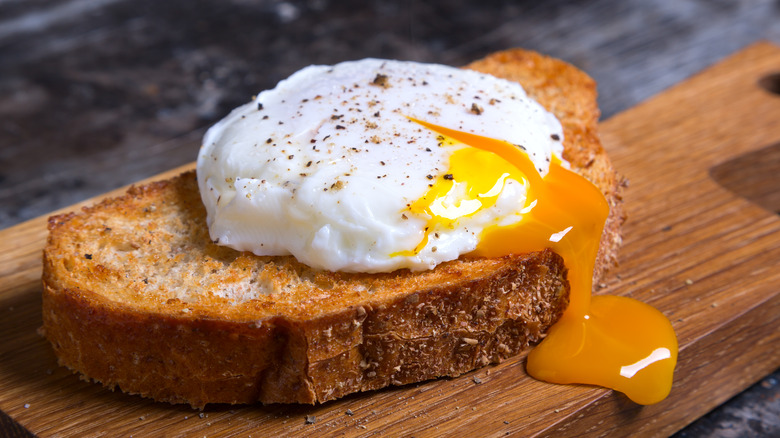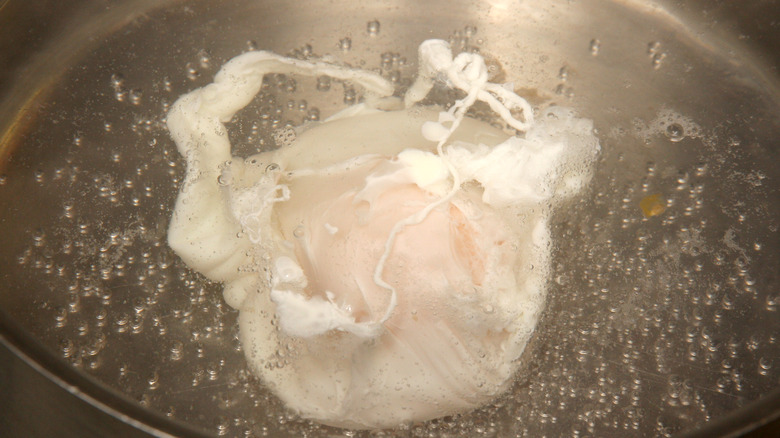Why People Are Using Plastic Bags To Make Poached Eggs
Scrambled eggs may be the most popular method of preparing the go-to breakfast food, according to a 2019 YouGov survey, but there are plenty of other ways to enjoy the golden orbs. You can eat them sunny-side up, fried, hard-boiled, or poached, to name a few. Each preparation has its own benefits and challenges. Take poached eggs, for example. The benefit? A runny yolk that oozes out of the white in what Instagram has dubbed #yolkporn. But the challenge? Trying to boil the egg perfectly without rupturing the yolk or overcooking the white.
Poaching typically consists of cooking the egg in a bowl in a pot of boiling water and gently stirring the water until the egg is cooked just the right amount of time. But recently, people have taken to poaching their eggs in plastic bags. Say what?! Here's why the trend is taking off on social media — and whether or not you should attempt it for yourself.
Using a plastic bag requires much less effort on your part
Poaching eggs the regular way requires a lot of finesse and skill — you have to stir the water softly and consistently to get the egg cooked just right. A few seconds too long and the egg will be overcooked, and a few stirs too strong and the yolk will break. That's the major appeal of poaching eggs in a plastic bag instead: It takes a lot of the work out of the process, thus reducing the risk of user (a.k.a. chef's) error.
A writer from Lifehacker tried out the new strategy, which simply requires wrapping your egg in a plastic bag or plastic wrap before dropping it into the water — and it's a total game-changer. "It's easy, quick, and allows you to poach multiple eggs at the same time without having to fish them out with a slotted spoon when they're done," they explained.
One note of caution, however: Make sure you do not use a bag that's too thin (according to Our Everyday Life), which could melt, or a bag that contains BPA, which could leech into your food (according to The Mayo Clinic).

